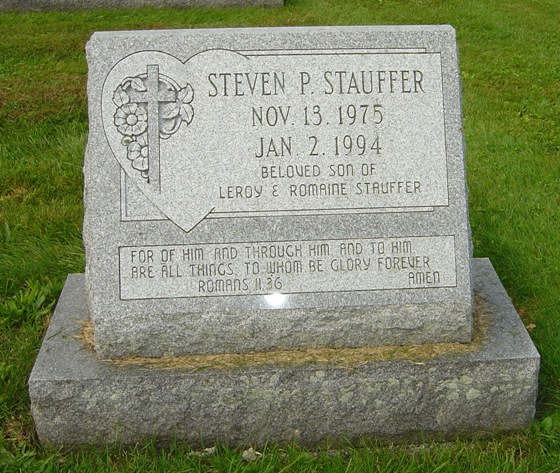A candlelight vigil will be held at 6 p.m. today to mark the 250th anniversary of the massacre of the Conestoga tribe at the former Lancaster workhouse. On Dec. 27, 1763 — 250 years ago — Scots-Irish vigilantes from miles to the north rode into Lancaster, then a borough of about 2,000 residents, to finish a job they began 13 days earlier, when they had slaughtered six Conestogas at their village in Manor Township. The Conestogas were the victims of a string of broken promises, the last of which resulted in their slaughter.
A treaty signed in 1701 by William Penn, gave the Conestogas 3,000 acres of prime Manor Township wilderness to call home, and he also pledged that the English and Conestogas "shall forever hereafter be as one Head & One Heart."
It was an ecstatic promise that lasted only 16 years. Penn's sons had designs on the Conestogas' extensive holdings and whittled it down to 400 acres.
Despite that first broken promise, the Conestogas remained peaceful and began assimilating with the growing number of settlers who became their neighbors. The Conestogas learned English, adopted English dress and remained loyal to the crown during the seven-year French and Indian War, which ended the same year as the Conestogas' demise.
Sure that they enjoyed the respect and protection of their neighbors and provincial officials, a Conestoga elder named Sheehays once scoffed at the notion that angry settlers would do them harm, saying, "The English will wrap me in their matchcoat and secure me from all danger." Sheehays tragically misjudged the English.
At dawn on Dec. 14, 1763, about 50 armed riders from the Paxton area of what is now Dauphin County attacked the Conestogas' humble, defenseless settlement in Manor Township. They fired into the huts, set the dwellings on fire, killed three men, two women and a boy, and left with booty and scalps.
A treaty was salvaged from the Indians' burned-out village. It was the 1701 document signed by William Penn granting the Conestogas "the full and free privileges and immunities" of English law. The treaty assured the Conestogas that they and the English "shall forever be as one head and one heart, and live in true friendship and amity as one people."
Because of snowfall, 13 other Conestogas who had been making the rounds peddling their brooms and baskets had not made it home the previous night. Now homeless in the dead of winter, those 13, plus a boy who escaped the first massacre, accepted the offer of Lancaster County's chief magistrate, Edward Shippen III, to take shelter in Lancaster's workhouse, a newly finished brick building — next to the jail — that was intended for the correction of beggars, drunkards and other nuisance offenders.
The Conestogas trusted that Shippen and others in Lancaster would protect them if, as seemed likely, the raiders from Paxton returned to try to complete their bloody work.
They did return, 13 days after the first attack. More than 50 vigilantes rode in, and were confronted at the workhouse by only two men. Both of them — Sheriff John Hay and Coroner Matthias Slough — feared for their safety and stepped aside.
Shippen's failure to assure the Conestogas safety in the workhouse was the ultimate broken promise.
Unlike the earlier plot to annihilate the Indians in their village, the raiders on Dec. 27, 1763, executed their plan perfectly. Not a single member of the tribe escaped a fatal thrust or blow. All died in the snow-covered yard, victims of heartless men. Victims, too, of the last of many empty promises.
On the afternoon after the second massacre, the jail keeper heaped the 14 bodies of the Conestogas onto a wagon, took them to a Mennonite family cemetery on Cherry Alley, and dumped the load into a large hole.
Into the pit fell the bodies of three married couples, Kyunqueagoah, known as Captain Jack, and his wife, Betty, or Koweenasee; Tenseedaagua and his wife, Kanianguas, and Saquies-hat-tah and his wife, Chee-na-wan. Also tossed were the bodies of five boys, Quaachow, Shae-e-kah, Ex-undas, Tong-quas and Hy-ye-naes, and of three girls, Ko-qua-e-un-quas, Karen-do-uah and Canu-kie-sung.
Lancaster's Moravian pastor, Albrecht Ludolph Russmeyer, shook his head. "They were all thrown on top of one another in a hole, without a blanket or cover, like a dog," he wrote, "and the onlookers said, 'That is not right, that is accursed, that is shameful.' "
Dirt was thrown upon the bodies, and Lancaster washed its hands of the Conestogas. The killers saw themselves as above the law and acted accordingly. Lancaster's leaders chose to let the killers get away with murder and no justice was ever served.
The tragedy cannot be reversed, but today, 250 years later, the fourteen innocent victims will be honored and the error of their murder acknowledged.












































